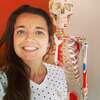Algoneurodystrophy or SRDC and osteopathy
What is ROSC aka algoneurodystrophy?
Complex regional pain syndrome (CRPS), formerly known as algoneurodystrophy, is characterized by one or more painful joint areas. Any joint in the body can be affected. People with algoneurodystrophy are often sensitive to stimuli, have stiff joints and vasomotor disorders (excessive sweating, edema). The disease usually progresses favorably without sequelae, but may last 12 to 24 months.
Epidemiology of algoneurodystrophy
Complex regional pain syndrome can affect people of all ages, but is most common in individuals between the ages of 50 and 70.
The prevalence is 3 times higher in women but is rare in children and adolescents and often misdiagnosed, especially in high level athletes.
Triggering factors of complex regional pain syndrome
The exact mechanism of occurrence of algoneurodystrophy (ARDS) is not well understood, but it may be related to central or peripheral nervous system dysfunction.
The main triggers of this condition:
- Repeated trauma / micro trauma
- Orthopedic surgery
- A prolonged immobilization
The different phases of the algo
2 phases compose this pathology:
1. The hot phase of algoneurodystrophy
This phase is characterized by the development of an inflammatory reaction in the affected area. It can last from a few weeks to a few months.
Typical symptoms of CRDS include:
- Signs of inflammation (redness, pain, heat and swelling)
- Joint pain
- Reduced mobility of the joint
- A hypersensitivity
2. The cold phase of algoneurodystrophy
The cold phase of complex regional pain syndrome (CRPS) occurs following the hot phase. Some patients may have only one or the other phase.
The hot phase is characterized by:
- A significant reduction in joint mobility in the affected area
- A cold and pale skin
- Anxiety
Diagnosis and additional examinations
The diagnosis of CRDS is difficult, as no specific examination allows direct detection. It relies mainly on questioning the patient, auscultation and, possibly, imaging tests (X-ray, MRI, bone densitometry, scintigraphy). It is important to check if the joint pain is not caused by other conditions such as arthritis or a joint infection.
Treatment of complex regional pain syndrome
The optimal treatment for CRPS is multidisciplinary. It may include functional management with a manual therapist such as a physiotherapist or osteopath for rehabilitation and mobilization of the affected joint area. Lymphatic drainage and regular physical activity are also recommended. The doctor may also prescribe medication to relieve symptoms such as painkillers or anti-inflammatory drugs.
Psychological help may be needed to help the patient understand and manage their pain, as well as to deal with the anxiety-provoking aspect of the disease. Recent studies suggest that taking vitamin C daily after a fracture may reduce the risk of complex regional pain syndrome.
Osteopathy and CRPS
Osteopathy for patients with complex regional pain syndrome (CRPS) is common and can be very helpful.
The osteopath will work on the areas of reduced mobility and painful areas to fight against the loss of joint mobility.
The goal will also be to eliminate mechanical dysfunctions and tensions caused by adaptation to pain.
In addition to the consultation, your practitioner will be able to ask you for a kinesiology band as well as advice on mobility or adapted physical exercise.
Marie Messager
Osteopath D.O
2 rue Alexis de Tocqueville
78000 Versailles

